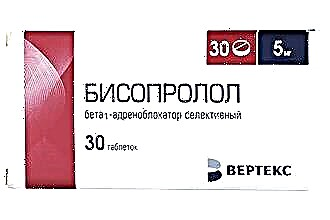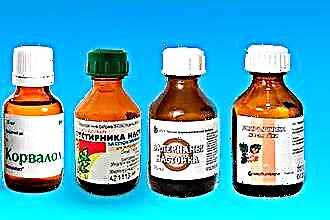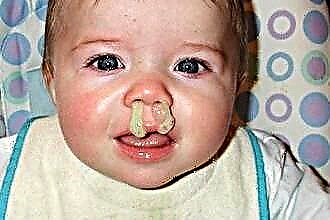Discomfort in the throat is a nonspecific symptom that appears in the case of functional impairment, septic and aseptic inflammation of the mucous membranes of the ENT organs. What to do if your throat hurts and it hurts to swallow?
 The principles of treatment are determined by the causes, localization and intensity of pain. Discomfort when swallowing may be accompanied by hyperthermia, fever, vomiting, chills, myalgia, enlarged lymph nodes, etc.
The principles of treatment are determined by the causes, localization and intensity of pain. Discomfort when swallowing may be accompanied by hyperthermia, fever, vomiting, chills, myalgia, enlarged lymph nodes, etc.
A qualified specialist can accurately diagnose the type of pathologist after the patient undergoes a visual examination and passing the appropriate tests. Timely access to a doctor and the passage of drug therapy can prevent the development of systemic complications that pose a threat to the patient's life.
Pathological physiology of pain
What to do if your throat hurts and it hurts to swallow? Before using drugs of local anesthetic and antiphlogistic action, you need to determine the cause of the appearance of discomfort. Pain of any localization is a subjective sign that occurs in the case of the development of catarrhal processes in the tissues.
Discomfort when swallowing is a natural reaction to inflammation and destruction of the soft tissues of the ENT organs. For the formation of unpleasant sensations in the airways, a slight defeat of lymphoid tissues and ciliated epithelium is sufficient. The occurrence of localized inflammation is perceived by patients as pain.
Sore throat when swallowing is an alarming signal, in response to which the reserves of the immune system are mobilized, preventing further development of pathological processes. Pain sensations are formed with the participation of blood vessels and pain receptors (nociceptors). As a result of tissue inflammation, there is an abundant blood supply to the lesions. The expansion of the capillaries increases the permeability of their walls, as a result of which effusions and, consequently, edema are formed in the affected tissues.
Acceleration of blood microcirculation in the mucous membrane of the ENT organs contributes to the supply of oxygen and organic compounds to damaged cells, which accelerate the regeneration processes.
 With the blood flow, immunocompetent cells migrate to the tissues affected by inflammation, which neutralize pathogens, which stimulates the healing process. In other words, discomfort in the pharyngeal area is confirmation of the presence of catarrhal or purulent processes provoked by damage to the ciliated epithelium. Violation of the integrity of the ciliated epithelium and lymphoid tissues is due to the impact of non-infectious or infectious factors. The former include pathogenic viruses, protozoa, fungi and bacteria, the latter include the mechanical and chemical effects of unfavorable exogenous factors.
With the blood flow, immunocompetent cells migrate to the tissues affected by inflammation, which neutralize pathogens, which stimulates the healing process. In other words, discomfort in the pharyngeal area is confirmation of the presence of catarrhal or purulent processes provoked by damage to the ciliated epithelium. Violation of the integrity of the ciliated epithelium and lymphoid tissues is due to the impact of non-infectious or infectious factors. The former include pathogenic viruses, protozoa, fungi and bacteria, the latter include the mechanical and chemical effects of unfavorable exogenous factors.
Classification of pain
Depending on subjective sensations, pain when swallowing is divided into two types: dull and acute. Sensory perception is largely determined by the depth of tissue damage, the prevalence of inflammation foci, the intensity and threshold of pain sensitivity. In the event of discomfort in the pharyngeal region, attention should be paid to the accompanying symptoms, which allows you to determine the nature of the unpleasant sensations.
Acute pains are localized in certain parts of the airways, they are practically uncontrollable, therefore they are poorly tolerated by patients. Dull aching pains are characterized by moderate intensity, as a result of which it is not always possible to determine the exact location of the inflammation focus. Depending on the duration of the discomfort, pain is conventionally divided into:
- periodic;
- wavy;
- chronic;
- growing;
- subsiding.
Intense cutting pains in the respiratory organs can lead to painful shock and death.
Burning, tickling, scratching and squeezing are types of pain that result from septic and aseptic tissue inflammation. It is possible to determine the nature of the discomfort and the degree of damage to the ENT organs only after the patient undergoes a hardware examination and the necessary tests.
Infectious factors
If your throat is very sore, what could be the reason? Discomfort occurs due to septic or aseptic inflammation of soft tissues.
 Possible infectious causes of a symptom include:
Possible infectious causes of a symptom include:
- diphtheria;
- acute tonsillitis;
- paratonsillar abscess;
- acute pharyngitis;
- laryngeal tonsillitis;
- acute laryngitis;
- Infectious mononucleosis;
- chondroperichondritis of the larynx;
- adenoiditis;
- measles;
- scarlet fever;
- flu;
- epiglottitis;
- candidal and aphthous stomatitis;
- acute laryngotracheitis;
- lingual sore throat;
- rubella;
- oropharyngeal candidiasis.
Due to the variability of the nature of the manifestation of pain, it is almost impossible to establish the type of pathology on the basis of the patient's subjective sensations. To find out the reasons for the appearance of an unpleasant symptom, it is necessary to determine and study the concomitant clinical manifestations of ENT disease.
Non-infectious factors
What to do if your throat hurts and it hurts to swallow? The onset of a symptom is not always due to the development of a bacterial or viral infection. Sometimes discomfort in the pharyngeal region is associated with the irritating effect of negative factors on the mucous membrane of the airways:
- prolonged stress on the ligaments of the throat (screaming, singing, giving a lecture);
- trauma of the pharynx with cutting objects (fish bones, metal shavings);
- burn of ciliated epithelium (inhalation of hot steam, drinking hot drinks);
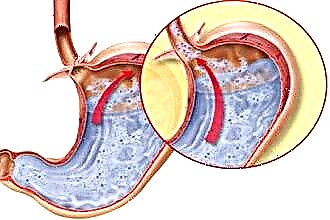 inadvertently swallowing solid objects (baby toys, plastic caps);
inadvertently swallowing solid objects (baby toys, plastic caps);- irritation of mucous membranes with volatile chemicals (phenol, chlorine, formalin, methyl alcohol);
- drying out of the ciliated epithelium due to insufficient air humidification;
- gastroesophageal reflux, in which gastric juice is thrown into the esophagus;
- neurosis of the pharynx resulting from inflammation of the glossopharyngeal nerve;
- cervical osteochondrosis, provoking a violation of the innervation of the throat tissues;
- vegetative-vascular dystonia and blood diseases.
Important! Pain caused by non-infectious causes does not worsen when talking and swallowing saliva.
Treatment of diseases at home is possible only on the recommendation of a specialist. In the absence of serious pathologies, therapy is carried out with the help of medicines and physiotherapy procedures. However, it should be borne in mind that self-medication is fraught with the spread of the pathological process and narrowing of the lumen of the airways. In some cases, tissue edema leads to the development of acute asphyxia, which can lead to the death of the patient.
Severe pain
When your throat hurts, first of all, you need to determine the cause of the discomfort. Sharp and growing pains often result from septic tissue inflammation. Pathogenic agents that have penetrated the tissues of the ENT organs poison the body with the products of their vital activity, as a result of which an infectious-allergic reaction occurs.
Severe discomfort when swallowing saliva in 90% of cases occurs against the background of the development of such pathologies:
- Infectious mononucleosis;
- retropharyngeal abscess;
- acute tonsillitis;
- flu;
- acute pharyngitis;
- diphtheria;
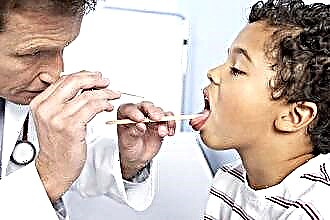 streptococcal infection.
streptococcal infection.
It should be noted that the swallowing of sharp objects leads to injury to the mucous membranes and the immediate appearance of discomfort.
At the same time, the intensity of subjective sensations largely depends on the depth of tissue dissection and the localization of the cut.
Untimely treatment of the respiratory organs with antiseptics can provoke the multiplication of opportunistic microorganisms that inhabit the mucous membranes of the airways.
Discomfort when swallowing
What could cause inflammation of the ENT organs if it hurts to swallow saliva? Exacerbation of discomfort when swallowing more often signals the development of catarrhal processes. Contraction of the pharyngeal muscles leads to elastic deformation of soft tissues, in the presence of lesions, irritation of pain receptors is observed, as a result of which pain occurs. When it hurts to swallow a patient, the following types of pathologies are diagnosed:
- cervical osteochondrosis;
- stylohyoid syndrome;
- neurosis of the pharynx;
- pharyngitis;
- burn of the pharynx;
- swelling of the thyroid gland;
- hypertrophy of the palatine tonsils;
- stomach ulcer;
- esophageal spasm;
- gastrointestinal reflux;
- achalasia of the esophagus.
A gradual increase in pain signals the progression of catarrhal processes and damage to the deeper layers of the ciliated epithelium.
Throat discomfort without fever
 Discomfort in the respiratory system, not accompanied by hyperthermia, often indicates the development of aseptic inflammation.
Discomfort in the respiratory system, not accompanied by hyperthermia, often indicates the development of aseptic inflammation.
A provocateur of pathological changes in tissues can be a burn, swelling, mechanical injury, drying out of the mucous membrane, overstrain of the muscles of the pharynx, etc.
It should be noted that the throat can also hurt due to the development of infectious diseases.
Fungal and sluggish inflammation rarely provokes an increase in temperature.
Therefore, chronic pharyngitis, aphthous stomatitis, oropharyngeal candidiasis, etc. can be classified as possible infectious causes of the appearance of an alarming symptom.
Many patients use pain relievers to relieve pain and ease the course of the disease. However, symptomatic therapy does not prevent the progression of the pathology, which can aggravate the patient's condition. In some cases, discomfort in the pharynx in the absence of hyperthermia signals the development of Helger's syndrome, in which there is an expansion of the internal diameter of the carotid artery.
Discomfort in the throat with hyperthermia
High temperature is a clear sign of the development of an infectious lesion of the respiratory system. Laryngeal discomfort is often caused by the spread of viral or microbial inflammation in the airways. A terrible cough occurs when mucus is hypersecreted by the ciliated epithelium, which flows down the walls of the pharynx and irritates the cough receptors.
The pathological secret separated by coughing occurs against the background of the development of such diseases:
- candidal pharyngitis;
- lingual tonsillitis;
- flu;
- whooping cough;
- adenoiditis;
- laryngitis;
- sinusitis.
Painful sensations can be a consequence of the development of a malignant or benign tumor in the pharynx.
If, during a cough, pain radiates to the ear, most often experts diagnose tubo-otitis (eustachitis) or otitis media.
Delayed treatment of infectious inflammation can lead to perforation of the ear membrane and the development of conductive hearing loss.
General principles of therapy
My throat is very sore, it hurts to swallow, what should I do? Therapy for discomfort in the pharyngeal region consists in the use of pathogenetic or etiotropic, as well as palliative methods. Etiotropic treatment is aimed at eliminating the causative factor of the pain syndrome, i.e. to eliminate pathogenic agents, open abscesses and restore the integrity of the ciliated epithelium. Based on this, the etiotropic methods of treatment include:
- surgical intervention (suturing wounds, removing foreign objects, excision of damaged tissues, opening abscesses, etc.);
- antimicrobial therapy (taking sulfonamides and antibiotics that destroy pathogenic bacteria);
- antimycotic therapy (taking antifungal agents that prevent the development of yeast-like and mold fungi);
- antiviral therapy (taking antiviral drugs that inhibit the reproduction of virions).
Etiotropic therapy allows you to completely eliminate the causative factor that caused the development of ENT disease. In the absence of risks, complications of the disease are limited to palliative treatment, in which medications are used to reduce the severity of pain and pathological reactions.
 To help relieve pain when swallowing:
To help relieve pain when swallowing:
- analgesics;
- antipyretics;
- homeopathic medicines;
- physiotherapy procedures;
- anti-inflammatory drugs.
Antibiotics
If it hurts to swallow, how to treat inflammation? In the case of the development of a bacterial infection, the lesions in the respiratory organs can be eliminated by means of antimicrobial agents. Penicillin antibiotics are used to treat bacterial tonsillitis, pharyngitis and other ENT diseases. They destroy the cellular structures of microbes, which leads to a decrease in the number of pathogens in the inflamed tissues. The most effective medications include:
- "Ecoclave";
- Amovikomb;
- "Bactoklav";
- Augmentin;
- "Ranklave";
- "Bactoklav";
- Fibel;
- "Medoklav".
Some types of bacteria synthesize a special enzyme - beta-lactamase, which increases the resistance of pathogens to antibiotics. In case of ineffectiveness of penicillin drugs, the following antimicrobial agents are used:
- "Erythromycin", "Safotsid" - macrolide antibiotics;
- "Cefazolin", "Avelox" - cephalosporin antibiotics;
- Ofloxacin, Tavanik - fluoroquinolone antibiotics;
- "Monoclin", "Tigacil" - tetracycline antibiotics.

Do not prescribe tetracycline antibiotics to preschool children, as they slow down bone growth and lead to enamel hypoplasia.
A bacterial infection can be cured within 7-10 days. Premature termination of antibiotic therapy can lead to a relapse of inflammation and chronicity of pathological processes.
Throat lozenges and sprays
What to do if it is very painful to swallow? To alleviate the course of an infectious disease, local drugs can be used. Throat can be treated with lozenges and oropharyngeal aerosols and sprays. The scheme of complex treatment of ENT pathologies includes drugs that have a local anesthetic, antiphlogistic, decongestant and antimicrobial effect.
To soften a sore throat and remove inflammation, it is advisable to use medication pills such as:
- "Ajisept";
- Falimint;
- "Suprima-ENT";
- Trakhisan;
- Septolete Plus.
After eliminating pain, the above drugs for irrigation of the oropharynx are quickly absorbed into the tissue, due to which the maximum concentration of the active components of the drugs in the foci of inflammation is achieved. Regular use of sprays and aerosols accelerates the regression of pathological processes, as a result of which discomfort when swallowing decreases. What medications are more appropriate to remove unwanted manifestations of an infectious disease?
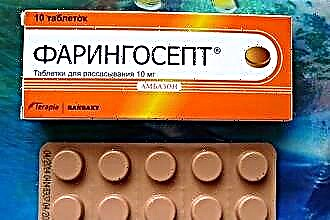 "Orasept";
"Orasept";- Faringosept;
- "Bikarmint";
- "Camphomenus";
- "Hexoral".
After eliminating pain, it is advisable to replace the above drugs with solutions for rinsing the oropharynx.
They will create an environment in the oral cavity that is unfavorable for the development of bacteria, which will prevent the recurrence of inflammation.

 inadvertently swallowing solid objects (baby toys, plastic caps);
inadvertently swallowing solid objects (baby toys, plastic caps); streptococcal infection.
streptococcal infection. Painful sensations can be a consequence of the development of a malignant or benign tumor in the pharynx.
Painful sensations can be a consequence of the development of a malignant or benign tumor in the pharynx. "Orasept";
"Orasept";